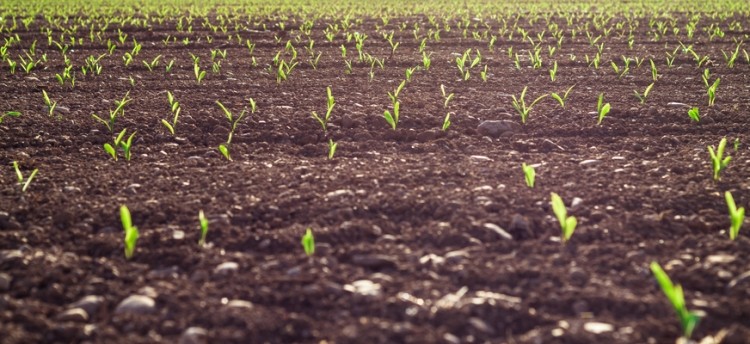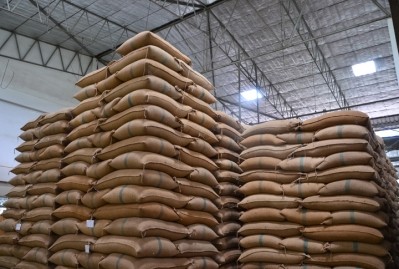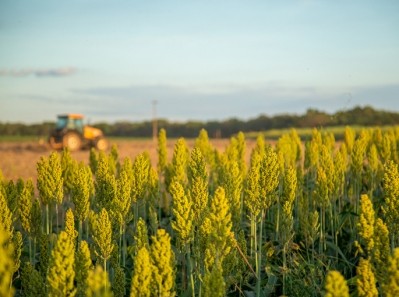US corn races toward harvest while soybeans saunter

The US Department of Agriculture (USDA) released details of feed crop production pace, harvest and crop condition late Monday.
Overall, crop condition for corn and soybeans remains better than scores the feed ingredients earned at this time last year, the department said.
Additionally, about a quarter of the crop has been harvested for both soybeans and corn, while about a third of the 2018 sorghum crop has been collected, said the USDA.
Corn races on
Corn reaching maturity continues to progress more rapidly than it has done for several previous years, said the department.
In the 18 states responsible for the majority of the 2017 corn crop, current crop maturity has reached 86%, the department said. Last year about 66% of the crop was considered mature at this point, and on average, about 71% has reached that stage by this time.
The only states meeting or trailing the production pace set last year are North Carolina and Texas, respectively, the department said.
The rate of harvest also has been faster than in past years, the department said. About 26% of the corn crop has been collected, up from 16% by this time in 2017.
No state has completely finished its harvest, however, those that have gathered the majority of their crop include Kentucky, Missouri, North Carolina, Tennessee and Texas, the department said.
Corn crop condition remained consistent with last week’s scores, said the department. About 69% of the crop has been rated good or excellent, an improvement on the 63% that earned that score at this point in 2017.
Soybean highlights
Soybean production in the 18 states that planted the majority of last year’s crop is continuing to see maturity rates outpace last year, the department said.
At this point in 2017, about 78% of the crop had started dropping leaves – up from the multi-year average of 75%, the department said. Currently, about 83% of the crop had reached that stage.
However, the pace of harvest is much closer to previous years, the department said. About 23% of the crop has been collected, up slightly from the 20% harvested on average and by this time last year.
Some states, however, are lagging behind the harvesting schedule set last year include Arkansas, Kansas, Louisiana, Michigan, Mississippi, Missouri, North Carolina, Ohio and Wisconsin, the department said.
Soybean condition has been remaining consistent, with about 68% of the crop rated as good or excellent, the department said. Last year at this point, about 60% of the crop had earned that score.
Sorghum stats
Sorghum production is moving more quickly than it did last year, but remains behind the pace set by the multi-year average, said the USDA. By this point on average, about 63% of the crop in the 11 states responsible for the majority of the crop had reached maturity.
This year about 62% of the crop has hit that point, but last year about 59% was mature at this time, the department said.
States that are trailing where they were last year include Missouri and Oklahoma, the department said. Only the sorghum crops in Arkansas and Louisiana have entirely reached maturity.
Similarly, only Louisiana has completely harvested its crop, the department said. Overall, the harvest is on par with last year as 34% has been collected – down from the 36% harvested by this time on average.
Sorghum crop quality dropped slightly from last week, with about 54% of the crop earning a good or excellent condition score, the department said. At this point last year, about 64% of the crop had that rating.
Wheat progress
Winter wheat planting in the 18 states responsible for 90% of the 2017 acreage has progressed more rapidly than in previous years, and outpaced efforts at this time last year, said the USDA.
About 43% of the upcoming crop has been planted, up from 34% that was in the ground by this point in 2017, the department said. On average about 40% has been planted by this point.
However, the amount of the crop that has emerged is on par with previous years, the department said. About 14% of the crop has sprouted, which is the multi-year average.
Last year about 10% of the crop had emerged by this point in time, the department added. States that are seeing this year’s crop sprout more quickly than it did last autumn include Colorado, Idaho, Indiana, Kansas, Michigan, Montana, Oklahoma and South Dakota.











